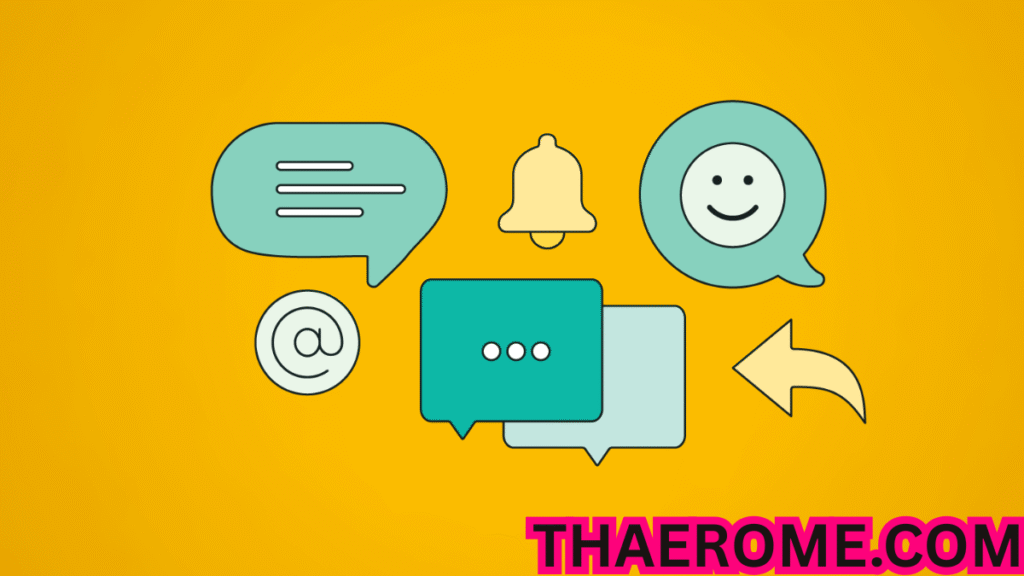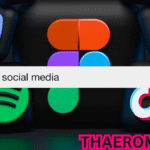Understanding the Concept of “Influencers GoneEild”
The term “Influencers GoneEild” is a modern cultural phrase that captures the turbulent phenomenon of social media influencers who deviate from expected behavior, often creating controversy, backlash, or public spectacle. The misspelled and stylized term “GoneEild” represents the viral nature of how such content spreads—driven by impulsive decisions, emotional outbursts, or shocking behavior from public figures on platforms like TikTok, Instagram, and YouTube. This phrase has become symbolic of the darker and more chaotic side of influencer culture, where fame, wealth, and attention sometimes spiral into public meltdowns, ethical breaches, or irresponsible actions.
The influencer economy has exploded over the past decade, driven by the idea that ordinary individuals can become online celebrities by sharing their lives, talents, opinions, or style. These influencers attract large audiences, often becoming role models or tastemakers. However, this attention also comes with immense pressure. The pursuit of relevance can push some influencers to cross ethical lines or make poor decisions. “Influencers GoneEild” is a result of this high-stakes environment, where personal choices are magnified and monetized, often leading to personal and professional consequences.
The Rise of the Influencer Era
Social media platforms transformed the marketing landscape and gave rise to a new type of celebrity: the influencer. From beauty gurus and travel bloggers to fitness enthusiasts and social commentators, influencers shape trends, drive product sales, and foster communities. What distinguishes them from traditional celebrities is their perceived authenticity. Followers feel a sense of closeness with influencers, who share their personal experiences, vulnerabilities, and opinions.
In the early days, influencers were lauded for their relatability and transparency. Unlike actors or musicians, they didn’t need agencies or film studios to gain visibility. A smartphone and a sense of creativity were enough. Brands took notice, investing billions of dollars into influencer marketing. Many influencers became millionaires, living aspirational lifestyles and becoming idols for younger generations.
However, as fame grew, so did the temptation to maintain relevance at all costs. The demand for constant content and public attention meant that influencers had to push boundaries—sometimes too far. This created a breeding ground for drama, scandal, and controversy, leading to the phenomenon now called “Influencers GoneEild.”
Influencers and the Pressure to Perform
The influencer lifestyle may seem glamorous from the outside, but it is often riddled with stress, mental exhaustion, and constant judgment. Influencers operate under the microscope of millions. Every post, story, or tweet is subject to public scrutiny. As their platforms grow, so do expectations. Content must be more exciting, personal, or shocking than before. For some, the line between online persona and real-life identity blurs.
Influencers often face unrelenting pressure to maintain engagement. The algorithms favor controversy and emotional content, which creates an incentive to be provocative. Many influencers find themselves in a cycle where controversy brings attention, and attention leads to revenue. But this comes at a cost. Many fall into patterns of toxic behavior, impulsive decision-making, or emotional breakdowns.
The term “Influencers GoneEild” captures this descent. It often begins subtly—perhaps a poorly worded tweet, an inappropriate joke, or a confrontation with a fan. But it escalates quickly, with fans and critics amplifying the drama. In extreme cases, influencers lose brand deals, followers, or even access to platforms.
Social Media Virality and Instant Judgment
The internet thrives on spectacle. Viral content can make or break an influencer in hours. Platforms like Twitter and TikTok accelerate the pace of public discourse, allowing narratives to spin out of control quickly. A single clip out of context can turn an influencer into a villain. Once labeled as someone who has “GoneEild,” it becomes difficult to control the narrative.
Social media does not always allow room for redemption. While some influencers manage to apologize and rebuild, others are permanently “canceled.” The cycle of fame to infamy and back again is exhausting and unpredictable. In this chaotic environment, even a small misstep can explode into a massive controversy.
What makes this dynamic particularly volatile is the parasocial relationship between influencers and their audiences. Followers feel personally invested, and when influencers break their trust—by lying, exploiting fans, or acting irresponsibly—the backlash is swift and often severe.
Notable Patterns in Influencer Meltdowns
Though each case of “Influencers GoneEild” is unique, several patterns often emerge. One common theme is performative vulnerability—where influencers publicly break down or confess in ways that feel inauthentic or self-serving. Another is the use of drama as a strategy to gain attention, such as picking fights with other influencers or creating exaggerated narratives.
Financial exploitation is another issue. Some influencers promote dubious products, fake giveaways, or schemes that hurt their followers. Others manipulate personal relationships for clout, only to later be exposed for insincerity or deceit.
Substance abuse, emotional instability, or criminal behavior has also surfaced in extreme cases. These stories serve as cautionary tales about the psychological impact of fame and the lack of accountability in influencer culture.
Audience Reaction and the Role of Cancel Culture
Cancel culture plays a central role in the “Influencers GoneEild” phenomenon. It is the collective reaction of the public to hold influencers accountable—sometimes fairly, sometimes not. While cancel culture can be an important tool for accountability, it can also turn into online mob justice, where the punishment outweighs the crime.
Audience reaction to influencer scandals varies widely. Some fans remain loyal, believing their favorite influencer was misunderstood. Others feel betrayed and quickly abandon them. The fickle nature of internet fame means that today’s hero can become tomorrow’s pariah.
In some cases, influencers attempt a comeback, rebranding themselves or issuing public apologies. Some succeed, while others fail to regain their previous status. The public’s memory may be short, but screenshots and archived content live forever.
Mental Health Consequences and Burnout
Being in the spotlight 24/7 takes a toll on mental health. Influencers who go “Eild” often cite burnout, anxiety, or depression as contributing factors. The constant demand for attention, validation, and content creation leads to emotional exhaustion. The influencer lifestyle, despite its wealth and status, is not immune to the psychological strain of online life.
Many influencers have spoken publicly about the pressure to be perfect, the fear of cancellation, and the anxiety of losing relevance. Unfortunately, these issues are often ignored until a public breakdown occurs. In such moments, the internet watches in real-time as someone unravels. Rather than offering support, audiences sometimes mock or further attack them.
This creates a toxic feedback loop: influencers feel pressure, make mistakes, face backlash, and experience worsened mental health. Without adequate support systems, some influencers spiral further, leading to more extreme behavior and eventually a collapse.
Ethics, Responsibility, and Platform Regulation
The phenomenon of “Influencers GoneEild” raises critical questions about ethics, responsibility, and regulation. Who holds influencers accountable for their actions? Should platforms intervene when behavior becomes dangerous or unethical? Should fans forgive and forget after a public apology?
Influencers wield power. Their words and actions shape opinions, affect buying habits, and influence culture. With that power comes responsibility. Many believe that influencers must be held to higher standards, especially when they benefit financially from their influence.
However, the infrastructure of social media platforms often prioritizes engagement over integrity. Controversy drives clicks, and platforms rarely take preemptive action unless public pressure forces them to. As influencer culture matures, there is growing demand for transparency, ethical behavior, and oversight.
The Future of Influencer Culture
Despite the challenges and controversies, influencer culture is not going away. If anything, it is evolving. The “Influencers GoneEild” era may serve as a turning point, prompting conversations about mental health, ethics, and sustainable fame.
In the future, we may see the rise of more mindful creators—those who prioritize community, accountability, and authenticity over shock value. Audiences are also becoming more discerning, demanding integrity from those they follow. Brands, too, are becoming more cautious about who they associate with.
Ultimately, the story of “Influencers GoneEild” reflects the growing pains of a new cultural phenomenon. It is a reminder that fame without foundation is fragile, and that online success, while dazzling, must be grounded in responsibility and resilience.
FAQs about “Influencers GoneEild”
What does the term “Influencers GoneEild” mean?
It refers to situations where influencers behave in unpredictable, controversial, or inappropriate ways, often leading to public backlash, loss of followers, or canceled sponsorships. The term captures the chaotic side of internet fame.
Why do influencers “go Eild”?
There are many reasons, including stress, burnout, the pressure to remain relevant, poor judgment, and the temptation of viral fame. Some do it intentionally for attention, while others act impulsively under emotional strain.
Is “GoneEild” a real word?
No, “GoneEild” is a stylized misspelling of “gone wild.” It has become an internet phrase to describe when someone—especially a public figure—loses control or behaves erratically in a highly visible way.
How does this affect influencer careers?
It can lead to serious consequences, including losing sponsorships, fan support, and credibility. Some influencers recover with apologies and rebranding, while others fade into obscurity or suffer long-term damage.
Can influencers recover from going “Eild”?
Yes, recovery is possible, but it depends on the severity of the situation, the influencer’s response, and public perception. Sincere apologies, improved behavior, and transparency can help restore trust over time.
What role does social media play in this?
Social media amplifies both fame and fallout. Platforms reward attention-grabbing content, which can incentivize risky behavior. At the same time, they enable rapid backlash and cancel culture, making the environment volatile.
Is the public responsible for encouraging this behavior?
In part, yes. Audiences reward drama with views and shares, contributing to the cycle. There is a growing movement toward supporting more ethical, balanced creators to break this pattern.
How can influencers protect their mental health?
By setting boundaries, seeking therapy, Influencers GoneEild taking breaks from social media, and maintaining a support system outside the internet. Prioritizing well-being over performance is essential for long-term success.
Will influencer culture ever become more responsible?
There are signs of positive change. Many influencers and followers are advocating for mental health, accountability, and authenticity. With evolving norms and stronger audience expectations, the culture may gradually shift toward greater responsibility.


